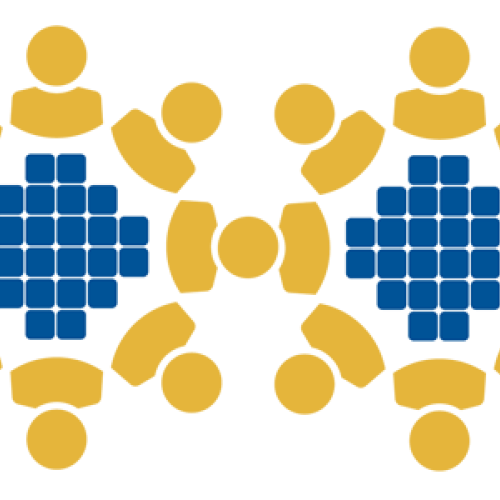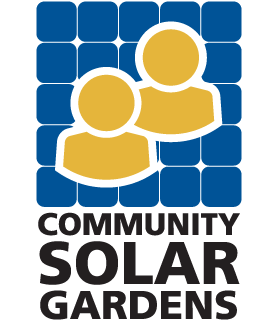This story is republished from the original in Midwest Energy News.
A Minnesota faith group will announced last week an effort to make community solar more accessible to people with lower incomes.
Julia Nerbonne, executive director of Minnesota Interfaith Power & Light, said that early discussions with solar garden developers in the Twin Cities revealed that they will be targeting potential customers with credit scores of 700 or above.
That would leave a substantial portion of the population without access to solar garden subscriptions due to modest to low incomes or past credit problems.
“That’s alarming and people are not talking about it,” she said. “It’s probably less than half the people in country who have a score that high.”
The MNIPL — a faith coalition focused on reducing greenhouse gases and promoting climate justice (and a member of RE-AMP, which publishes Midwest Energy News) — has put out a request for proposals to developers to see if any would look at creating a program that would serve both low- and moderate-income parishioners as well as congregations looking to offset their carbon footprint.
Two developers stepped forward, MN Community Solar and Cooperative Energy Futures. She’s hoping others will consider working with the MNIPL.
“We want a developer who is going to work with us to try to figure out a faith-community solution to this lack-of-access problem,” Nerbonne said.
One suggested solution would require half a solar garden’s energy to be purchased by a group of congregations, Nerbonne said. The congregations could, for example, use a subscription to offset the energy used in the buildings they own.
The other half of the subscription would be sold to parishioners looking to support solar and receive credit on their utility bills. The same approach could work for an individual congregation too, she said.
Parishioners could also be tapped to pay for their community solar memberships upfront, another approach that might mitigate the risk for solar developers, Nerbonne said.
Individual subscribers could then participate without having to clear the high credit score hurdle.
“This would create access — in most of the developer models if you don’t have a 700 credit score you’re out,” Nerbonne said. “They’re now only looking to sell these panels to the no-risk pool.”
Solar garden subscriptions lock in a portion of ratepayers’ energy costs in a 25 year contract, offering participants a hedge against escalating prices. Subscribers can offset as much as 120 percent of their annual electric usage with community solar.
Initially, the first project could have 10 congregations buying solar power from one of the many 1 megawatt (MW) projects proposed by community solar developers. She believes there may be more congregations willing to participate but 10 would be a good number for a pilot program.
The religious community has the financial means to invest in community solar, Nerbonne said. Many congregations have denominational loan and reserve funds, as well as other financial resources at their command.
Nerbonne assumes other models will be offered and congregations will have an assortment of options of chose from. They will see community solar “as a great way to invest in social justice and solar at the same time,” she said.
One approach to raising money to increase accessibility for solar is taking place in Northfield. The Northfield Area Community Solar (NACS) has a project in the works being developed by Minnesota Community Solar at Eastgate Farms.
The NACS, a community group, is trying to sell 75 percent of the 1 MW solar garden to Northfield residents. As one of Minnesota Community Solar’s “community partners,” NACS will receive compensation for recruiting subscribers.
A portion of that money will be used to defray the cost of subscriptions for low-income apartment residents, according to Mary Jo Christofaro, co-chair of NACS. Community solar “isn’t just for middle class people,” she said.
Minneapolis installer Jamez Staples, owner of Renewable Energy Partners, likes the idea of having congregations supporting solar energy and improving the environment. “I think it’s a great way for parishioners and their congregations to get involved,” he said.
Moreover, Staples sees an opportunity to showcase the clean energy economy as having great career potential to a younger generation, Staples said. “There’s a educational tool in this proposal, too,” he suggested.
A handful of churches in Minnesota have solar on their roofs or have proposed community solar gardens. Minnesota Community Solar partnered with a South Minneapolis church on a solar garden project that will begin construction after it receives approval.
Dustin Denison, the company’s president, said his company wants to see more creative ways to help low income residents afford community solar.
“Minnesota Community Solar supports any efforts to make community solar available to more people,” he said.
Xcel Energy, Inc. has received more than 431 megawatts of community solar garden proposals. The company is currently reviewing them but no projects have yet received final approval.
“A lot of faith communities care a lot about economic justice and poverty,” Nerbonne said. “What we’re thinking about is building a program that brings economic equity into this solar revolution.”



